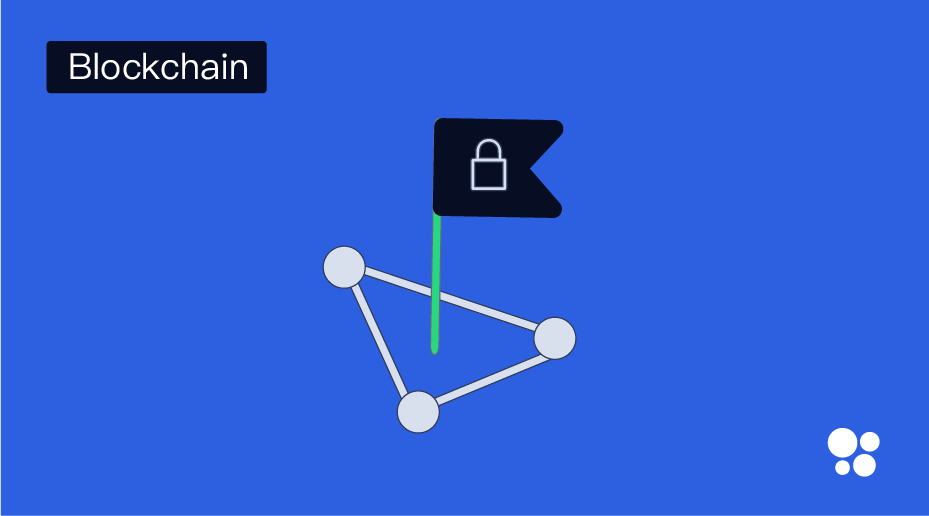
Constant Function Market Makers: DeFi’s “Zero to One” Innovation

Three months ago, I tweeted out this image with the following caption:
When someone says “Proof-of-Stake is less wasteful”
The tweet was meant as a gag, but it spurred one of the most insightful conversations I’ve ever had on the platform. Since the discussion, my framework for thinking around this issue has changed drastically.
The purpose of this post is to highlight what a few of these insights were, and where I currently am in my thought process. Keep in mind that this post focuses rather narrowly on the economics of Proof-of-Work versus Proof-of-Stake, I’ve left all else aside for brevity.
What the tweet aimed to convey was simply Paul Sztorc’s assertion that “Nothing is cheaper than Proof-of-Work” from perhaps the most influential thought piece in public discourse on the economics of Proof-of-Work versus Proof-of-Stake.
In his post, Paul argues that the work we will do (and the costs we will bear) to earn block rewards in a blockchain system will be equal to the rewards being paid out, regardless if the work involves calculating hashes or staking funds. Put simply, if a blockchain pays out on average $1000 per block, up to ~$999 (but no more) will be spent by Proof-of-Work miners in order to maximize their odds of earning this reward, and up to ~$999 (but no more) will be spent in costs of locking up capital by Proof-of-Stake stakers to do the same.
But Paul also argues that not only are the costs to the individual comparable, so are the costs to society! In a world where a Proof-of-Work system powers our currency, we burn vast amounts of energy to secure the chain. In a world of Proof-of-Stake, we lock up vast sums of capital for extended periods of time to secure the chain. Paul’s argument is that making capital inaccessible to the broader economy restrains the market, stifles technological progress and economic growth. This is why the argument is so important; it gives an economic reason for why bitcoin should remain the way it is, with a rationale that isn’t just about the system’s security assurances!
For the entirety of my years spent in the cryptocurrency industry, Paul’s view roughly summarized my thoughts on the broader economic debate on this topic. In 2016, I quoted Paul in my master thesis. And from having discussed this with many other bitcoiners, I would say it currently constitutes the mainstream view.
Now, let’s look at the counterarguments that surfaced during this recent hot Twitter debate, accompanied by my own thoughts.
The contribution to the debate by David Schwartz was the following: Yes, both stakers and miners will spend up to ~$999 for a block reward of $1000. But the security provided in the form of economic guarantees are wildly different. Let’s think about the punishment for attempting a double-spend attack in each system.
With $1000 paid out every 10 minutes, we’re talking about ~$50 million a year. If stakers find staking to be worthwhile at a 5% annual return on their capital, around $1 billion would be staked. To successfully launch a double-spend attack in PoS, you’d then need to control >⅔ of that to be able to produce a conflicting chain (~$670 million), which will be slashed in the event of an attack.
The punishment for double-spending in Proof-of-Work is harder to reason about, but at least under certain circumstances it’s significantly smaller. For instance, imagine that a miner amasses 51% hashrate and recovers a portion or even all of his upfront hardware investment by mining profitably. In this case, the cost of a reorganization attack (of let’s say the last seven blocks) comes nowhere near $670 million. It would cost ~$7000 (7 x $1000) to produce the blocks. And if the reorganization is successful, the attacker would also earn the block rewards from the blocks he mined in the attack (whatever they’re worth after such an attack).
This isn’t to argue that double-spending in PoW is by any means practical, it’s just a hypothetical example. While the analysis overlooks many of the practicalities of these attacks perhaps to the point of being misleading, it might hold a kernel of truth in a narrow economic sense that’s worth exploring further.
Thinking about it another way: staking $5 and getting it back later is obviously preferable over burning $5. You’d have to stake something like $100 over a year in order for your inconvenience (your perceived cost) to match the burning of $5. Even though the cost to the individual is the same (~$5 vs. $5), the punishments aren’t ($100 vs. $5)! Now, Proof-of-Work coins with specialized mining will often have hardware investments at stake that may fall in value in the event of an attack, but it will never match the value-at-risk of pure staking protocols since the Proof-of-Stake stakers don’t need to bear the costs of burning vast amounts of electricity when competing for the block rewards.
We can say that PoS punishments are asymmetric to PoW; larger sums of money are at risk when block rewards are equal.
This carries some meaningful consequences. If PoS achieves higher economic security for the same cost, this mean that the security budget for PoS can be smaller, yet produce the same economic guarantees. This means that we can decrease how much is paid out in block rewards, yet still have a chain that is as secure as a PoW chain.
The argument that PoS systems can decrease how much is being paid out in block rewards as a result of this asymmetry doesn’t really work in a bitcoiner mindset. Bitcoiners operate under an impression that at some point, all block rewards from minting new supply will be gone. The only thing securing either chain at that point will be transaction fees — which are mainly set by the market for block space, not by consensus algorithms. It is further assumed that these fees will be sufficient to secure the chain. Hence, you can’t benefit from this asymmetry — it only means that PoS chains would be “over-secured” by stakers, if we assume that a PoW chain will be sufficiently secure without it.
Paul has a point, but the counterargument doesn’t seem very bulletproof. The assumption which is a bit vague is the notion that transaction fees will always be sufficient to secure a PoW chain. Transaction fees vary greatly from time to time in blockchain systems, and it’s a major source of controversy among some bitcoiners whether fees alone will reliably produce the security we need. We could definitely see scenarios where transaction fees are struggling to produce the necessary security budget. In that sense, it becomes very attractive if a PoS protocol could produce more security with the same rewards.
In the worst case, this could result in a situation where PoW protocols become unstable without supply inflation, where a PoS protocol manages to keep itself afloat on transaction fees alone. Annoyingly, that means that a PoS system could even potentially become the asset with the higher stock-to-flow! This is all speculation of course, but it highlights the not-so-undramatic consequences that come with this asymmetry that shouldn’t be swept under the rug.
Dan’s argument is that wealth in our world cannot be measured by how much “money” we have. This is easy to understand — the world cannot get richer from money being printed. Such an action only reallocates who has the ability to purchase stuff, but society as a whole won’t suddenly have more goods or services available to its population as a result.
Yet, in a Proof-of-Stake currency world, the asset that is taken out of circulation by staking is just money. So, does the quantity of goods or services in the world decrease just because someone is staking their assets? No! It just means that someone is forgoing their ability to purchase goods & services in favor of staking, which means there’s more to go around for everybody else. Staking does not destroy any assets in the real world, and does not make the world poorer.
Dan further argues that there is no such thing as “making capital inaccessible to the broader economy”. Just like a government printing money makes everyone else poorer, a person locking up his money makes everyone else richer (for the period). Because everyone else gets a little bit richer, the net amount of capital accessible to the economy remains the same.
Paul’s argument is that money is not like some glass of water that you pour over a surface which all balances out no matter where it falls. It does in fact matter a lot that there are various places where capital is more concentrated, that there are “pockets” of money in useful places. A concentrated capital injection into a business rich with potential at the right time matters a much greater deal to society than a bunch of Joe’s on the street carrying around an additional $5 bill in their pocket.
Dan’s point about how there isn’t any value in a unit of money itself is valid, but there is a tremendous amount of value in the distribution. The market (ideally) allocates money to those who produce value, and relies a great deal on that there are “pockets of money” that can be used productively. Staking effectively eliminates the access to these pockets for extended periods of time, which means that some ventures that could have received funding now won’t. That is the social cost of staking.
The way I understand Paul is by thinking about how entropy works. In thermodynamics, we say:
Low entropy = order = high energy
High entropy = disorder = low energy
I think similar logic can be applied to economics.
Order = high economic potential
Disorder = low economic potential
What a “pocket of money” is, essentially, is an island of “order” in a disordered system. An intelligent distribution of money increases the total economic potential of the system.
Even though everyone might become a little bit richer when one entity locks away their money, this wealth is just evenly distributed over a grey blob. The net economic potential still suffers. So Dan’s argument is essentially “we’re not taking any pellets out of the jar!” while Paul’s argument is “true, but we’re still taking economic potential out of the jar by creating more disorder!”. The redistributed wealth does not carry the same energy as the original, concentrated capital did.
So the point above wasn’t actually a counterpoint, I just agreed with Paul. Now let’s attack Paul with a real counterpoint.
While I think Paul is right in principle, the whole picture changes when we go a bit further and think about who it is that will be staking.
Let’s first consider the fact that staking is competitive in the same way as mining. In the mining business, a miner who has access to cheaper hardware and cheaper energy will outcompete other miners, since mining raises the mining difficulty. As such, mining in general will tend towards using the cheapest energy sources available on the planet. Interestingly, no source of energy is cheaper than “trapped” ones that can not be put to use for anything else.
Examples of such trapped energy sources are natural gas, solar, wind and excessive hydropower. These types of sources are on the rise for mining, something which bitcoiners often like to pontificate about whenever the environmental impact of PoW is put under scrutiny. This green-ness only addresses the energy source however, not the externalities from manufacturing mining hardware.
This exact same principle can be applied to staking as well. What is the cheapest “capital source” for staking, that you’ll never be able to compete with? If we take Ethereum as an example, it will be people who are long ETH. A person who is long ETH, and who has already decided that he wants to be long ETH for the next 5–10 years has virtually zero economic cost for staking. And better yet, it makes no difference to the broader economy whatsoever if he’s just holding or staking. Moreover, such stakers will outcompete other stakers by being willing to accepting lower and lower yields! This “trapped capital” will outprice any “non-trapped capital“ that could have been put to productive use somewhere else, same as in the mining example above.
Going back to this image; the reason it was humorous was because it captures the argument that Proof-of-Stake is just an obfuscated form of Proof-of-Work.
However, there’s a twist to it. It turns out that powering an EV charger using a diesel generator isn’t equivalent to just powering the cars with diesel directly. A diesel-generator-charged Tesla will still drive further than a diesel-powered vehicle on the same amount of diesel! Electrical engines simply use the energy more efficiently, and are indeed less wasteful.
In that same vein, there’s seemingly more to the economics of Proof-of-Stake than what is covered by the mainstream bitcoiner view. The “green capital” part of the argument above is something I find personally fascinating and is the primary reason why I now believe it is worth exploring the potential advantages of PoS from a societal impact lens.
From a narrow, economic point-of-view, there does seem to be advantages to PoS which I had not fully considered before, but I still believe that Proof-of-Work is the most robust way we have to secure a chain, and the soundest way to architect a cryptocurrency.
There are several technical security issues in Proof-of-Stake systems which we’ve glossed over entirely in this post — many which have to do with the security dependencies of Proof-of-Stake being circular (the asset that secures the protocol is also produced by the protocol). I remain confident thinking that Proof-of-Work is the best system for security we have right now all factors considered, but my mind could change in the future. I’ll keenly monitor Proof-of-Stake systems moving forward.
Many thanks to Hasu, James Prestwich, Dan Robinson, Brian Crain and Torbjørn Bull Jensen for contributing their thoughts to this piece, and Paul Sztorc, Alex Mizrahi, Emin Gün Sirer, Zaki Manian, David Schwartz, Georgios Konstantopoulosand many others for engaging thoughtfully in the overall discussion.
Disclaimer: The Content is for informational purposes only, you should not construe any such information or other material as investment, financial, or other advice.

Constant Function Market Makers: DeFi’s “Zero to One” Innovation

What is DeFi and why do we need it?

Synthetic Assets in DeFi: Use Cases & Opportunities
blockchain-world-en